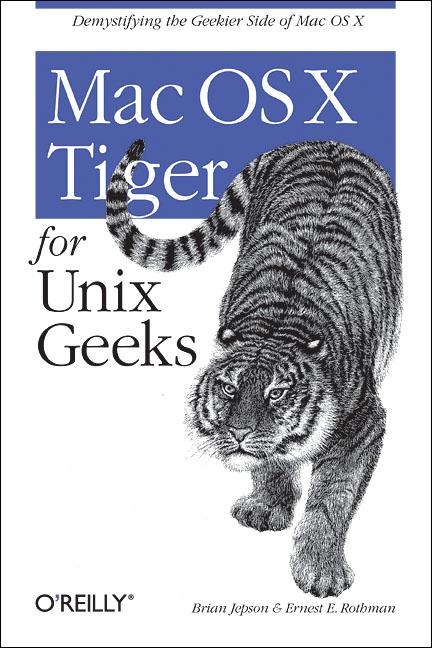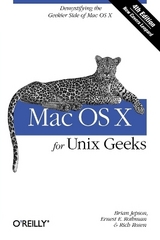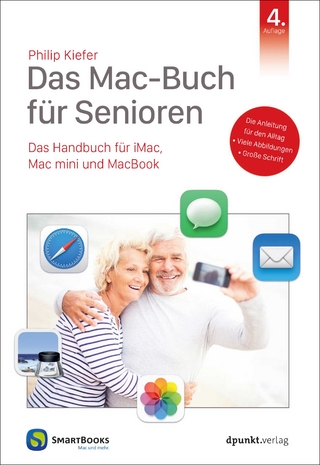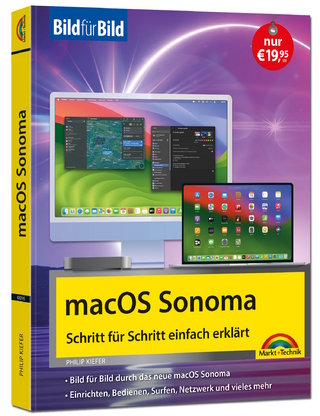
Mac OS X Tiger for Unix Geeks
O'Reilly Media (Verlag)
978-0-596-00912-0 (ISBN)
- Titel erscheint in neuer Auflage
- Artikel merken
If you're one of the many Unix developers drawn to Mac OS X for its Unix core, you'll find yourself in surprisingly unfamiliar territory. Unix and Mac OS X are kissing cousins, but there are enough pitfalls and minefields in going from one to another that even a Unix guru can stumble, and most guides to Mac OS X are written for Mac aficionados. For a Unix developer, approaching Tiger from the Mac side is a bit like learning Russian by reading the Russian side of a Russian-English dictionary. Fortunately, O'Reilly has been the Unix authority for over 25 years, and in "Mac OS X Tiger for Unix Geeks", that depth of understanding shows. This is the book for Mac command-line fans. Completely revised and updated to cover Mac OS X Tiger, this new edition helps you quickly and painlessly get acclimated with Tiger's familiar-yet foreign-Unix environment.
Topics include: Using the Terminal and understanding how it differs from an xterm; Using Directory Services, Open Directory (LDAP), and NetInfo; Compiling code with GCC 3; Library linking and porting Unix software; Creating and installing packages with Fink; Using DarwinPorts; Search through metadata with Spotlight's command-line utilities; Building the Darwin kernel; and Running X Windows on top of Mac OS X, or better yet, run Mac OS X on a Windows machine with PearPC! "Mac OS X Tiger for Unix Geeks" is the ideal survival guide for taming the Unix side of Tiger. If you're a Unix geek with an interest in Mac OS X, you'll find this clear, concise book invaluable.
Brian Jepson is an O'Reilly editor, programmer, and co-author of Mac OS X Panther for Unix Geeks and Learning Unix for Mac OS X Panther. He's also a volunteer system administrator and all-around geek for AS220, a non-profit arts center in Providence, Rhode Island. AS220 gives Rhode Island artists uncensored and unjuried forums for their work. These forums include galleries, performance space, and publications. Brian sees to it that technology, especially free software, supports that mission. Ernest E. Rothman is an Associate Professor of Mathematics at Salve Regina University (SRU) in Newport, Rhode Island, where he is also Chair of the Mathematical Sciences Department. Ernie holds a PhD in Applied Mathematics from Brown University and held positions at the Cornell Theory Center in Ithaca, New York, before coming to SRU. His academic interests are in scientific computing, computational science, and applied mathematics education. As a long-time Unix aficionado, Ernie has enjoyed tinkering with Mac OS X since the day it was first released. Ernie has recently become interested in digital photography, especially of his Newfoundland dogs.
Preface Part I. Getting Around 1. Inside the Terminal Mac OS X Shells The Terminal and xterm Compared Using the Terminal Customizing the Terminal The Services Menu Bonjour Alternative Terminal Applications The open Command 2. Searching and Metadata Spotlight Resource Forks and HFS+ Metadata 3. The Mac OS X Filesystem Working with Foreign Filesystems Files and Directories 4. Startup Booting Mac OS X Adding Startup Items Scheduling Tasks 5. Directory Services Understanding Directory Services Programming with Directory Services Configuring Directory Services NetInfo Manager Directory Services Utilities Managing Groups Managing Users and Passwords Managing Hostnames and IP Addresses Exporting Directories with NFS Flat Files and Their Directory Services Counterparts Restoring the Directory Services Database 6. Printing Printer Setup Utility Common Unix Printing System (CUPS) Gimp-Print 7. The X Window System Installing X11 Running X11 Customizing X11 X11-based Applications and Libraries Connecting to Other X Window Systems Virtual Network Computing 8. Multimedia Burning CDs Video Image Editing 3D Modeling 9. Third-Party Tools and Applications Virtual Desktops and Screens The Application Menu Expose Virtual Desktops SSH GUIs R with an Aqua GUI NeoOffice/J and OpenOffice 10. Dual-Boot and Beyond Why Bother? Linux on Mac Hardware Emulators on Mac OS X Emulating the Mac Part II. Building Applications 11. Compiling Source Code Compiler Differences Compiling Unix Source Code Architectural Issues X11-based Applications and Libraries Xgrid 12. Libraries, Headers, and Frameworks Header Files The System Library: libSystem libstdc++ Shared Libraries Versus Loadable Modules Library Versions Creating and Linking Static Libraries Creating Frameworks The Dynamic Linker dyld: Prebinding, the Pre-Tiger Way Performance Tools and Debugging Tools CHUD Tools Interesting and Important Libraries Numerical Libraries Part III. Working with Packages 13. Fink Installing Fink Using Fink FinkCommander Installing Binaries 14. DarwinPorts Installing DarwinPorts Using DarwinPorts DarwinPorts Maintenance Installing Binaries DPGUI 15. Creating and Installing Packages Using PackageMaker Using GNU tar Disk Images Creating Fink Packages Creating DarwinPorts Packages Part IV. Serving and System Management 16. Using Mac OS X as a Server Getting Connected Built-in Services: The Sharing Panel Email The Mac OS X Firewall 17. System Management Tools Diagnostic Utilities Kernel Utilities System Configuration Third-Party Applications 18. Free Databases SQLite MySQL PostgreSQL PHP and Perl 19. Perl and Python Perl for Mac OS X Geeks Python for Mac OS X Geeks Part V. Appendixes A. Mac OS X GUI Primer B. Mac OS X's Unix Development Tools Index
| Erscheint lt. Verlag | 5.7.2005 |
|---|---|
| Zusatzinfo | Illustrations |
| Verlagsort | Sebastopol |
| Sprache | englisch |
| Maße | 156 x 224 mm |
| Gewicht | 546 g |
| Einbandart | kartoniert |
| Themenwelt | Informatik ► Betriebssysteme / Server ► Macintosh / Mac OS X |
| ISBN-10 | 0-596-00912-7 / 0596009127 |
| ISBN-13 | 978-0-596-00912-0 / 9780596009120 |
| Zustand | Neuware |
| Haben Sie eine Frage zum Produkt? |
aus dem Bereich



